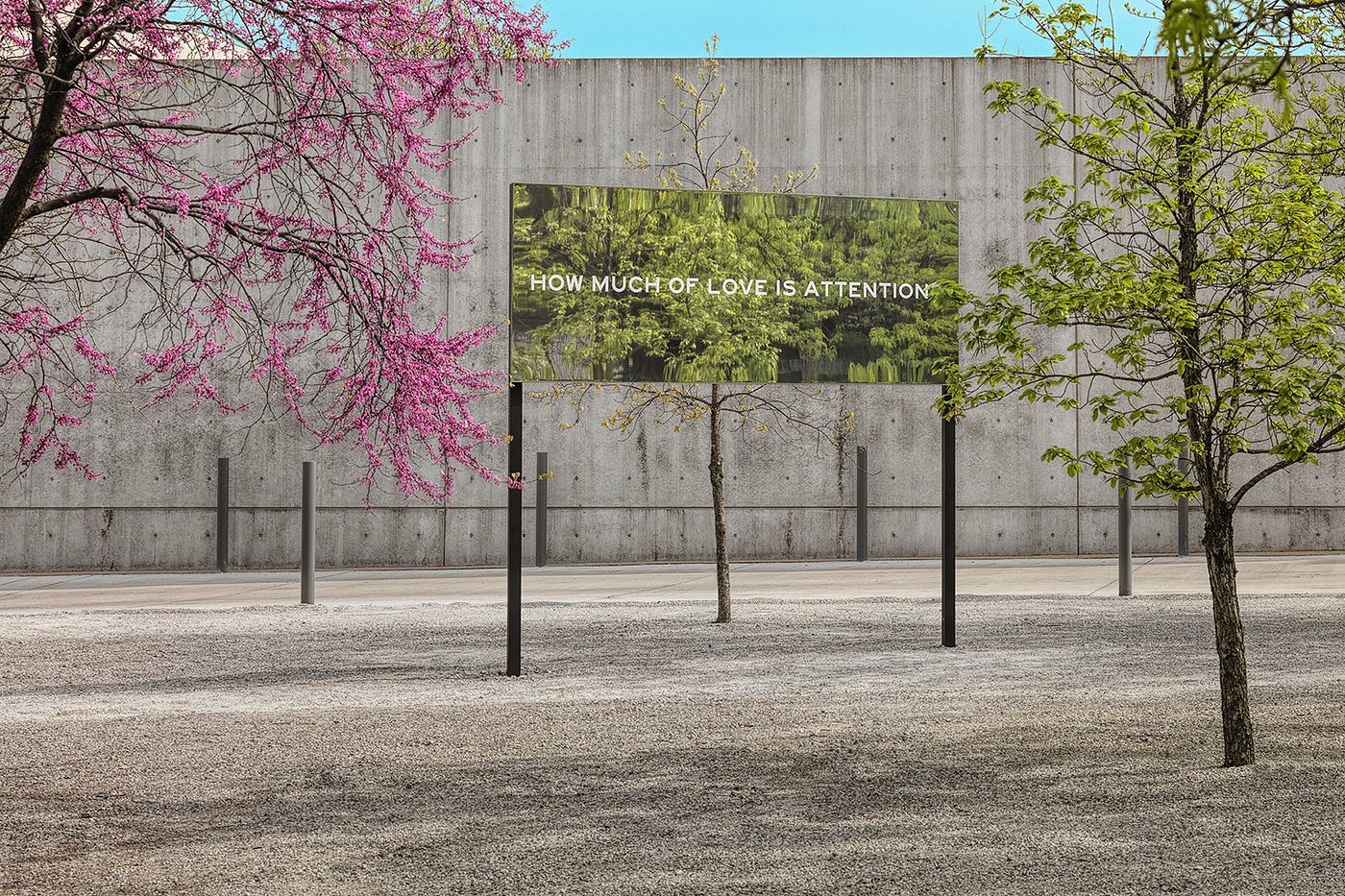
[Original publication: No Proscenium, 10/13/21]
Get Laura Hess’s stories in your inbox
Join Medium for free to get updates from this writer.
SubscribeSubscribe
Currently presented at the Pulitzer Arts Foundation, Wayfinding is an art installation consisting of two parts: a collection of more than 30 signs and a site-specific audio work narrated by artist Chloë Bass and local St. Louis collaborators. Crafted from multiple sources, the audio’s text includes quotes from a city government program, internet reviews of the Pulitzer, landscape architecture teaching guides, reports by the National Institutes of Health, and Bass’ personal account.
Wayfinding signage is vital — and often forgettable. For many, it’s a tool offering little beyond the utilitarian. Bass, however, transforms such signage into a resonant, poetic experience. Signs are divided up into four sections on the Pulitzer’s grounds. Mirrored billboards reflect their environment and, at times, letters vanish into the clouds: HOW MUCH OF LOVE IS ATTENTION becomes HOW MUCH OF LOVE IS ATTRACTION.
The audio piece expands on the physical installation by interweaving seemingly unrelated entities. In it, Bass links health disorders, legalese, and public opinion with tenets of architectural wayfinding. Her format raises questions around patterns, individual intuition, and democratic processes. As a result, Bass inverts wayfinding from a routine, external search of the tangible world into a probing, internal dialogue: How do we each find our own way, through painful situations or complex relationships, against the current of available resources and (possibly perceived) limitations?
Bass explores what is said and what is unsaid, using language’s negative space to mold psychological environments. She also questions our adaptations: how we create immaterial landmarks to navigate situations, people, or moments in our lives and what we no longer see over time. In practice, wayfinding is orienting oneself within physical space and developing a plan to reach the desired destination; Bass’ Wayfinding signposts the emotional spaces we inhabit and challenges the idea of knowable, reachable destinations within those landscapes.




















Discussion